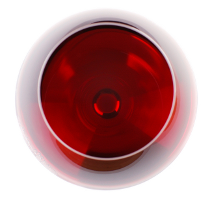| Tannins |
Source |
Stabilization Capacity |
Sensory Modification |
Dose |
| Protein |
Color |
Oxidative |
PREMIUM® STABSTAB: Allows for the treatment of wine with minimal disturbance
of the sensory characteristics of the product.
It has an optimal reactivity to proteins. Tests have shown this is an effective stabilizer against the invasiveness
of oxygen.
Its exclusive action is advisable for fine white wines, even the aromatic ones, during maturation or
pre-bottling. |
Gall |
+++ |
++ |
+++ |
Limited interference with the organoleptic characteristics. |
Red wines: 5 to 20 g/hl
White wines: 1 to 5g/hl |
PREMIUM® COLOR SGPREMIUM® COLOR SG: Pool of ellagic, gallic, catechinic and procyanidinic
tannins with a synergetic action for the color stabilization of great wines.
To be used at grape
pressing and/or devatting, in structuration. |
Limousin cask wood + Chestnut + Gall + Grapes |
+++ |
+++ |
++ |
Increases structure. Limited influence on the sensory characteristics. |
Maceration of red wines: 10 to 20 g/hl |
| PREMIUM® TAN SGPREMIUM® TAN SG: Recommended for structuring and maturation in vinification
in red, and during the fermentation or blending stages of white wines - in moderate amounts. |
Cask wood |
+++ |
+++ |
++ |
Limited increase of the woody hints. Increases tannic structure. |
Red wines: 5 to 30 g/hl
White wines: 1 to 5g/hl |
COLOR STAB SGCOLOR STAB SG: Pool of ellagic, gallic, and catechinic tannins with a
synergetic action for the color stabilization of great red wines. Applications over
multiple years currently show it to be a product of reference.
COLORSTAB® is an integral part of the Procedure
for vinification of red wines and micro-oxygenation. |
Tara +Gall + Chestnut + Quebracho + Cask wood |
+++ |
+++ |
++ |
Increases structure. Limited influence on the sensory characteristics. |
Maceration of red wines: 10 to 30 g/hl
Maceration of rosés: 3 to 8 g/hl |
| CASTANEACASTANEA: Used during blending of white wines to render resistance
to oxidation. It contributes considerably to color stabilization of red wines, giving them more complexity and body.
Ideal for dosage at devatting, to give more body during structuration. |
Chestnut Wood |
++ |
++ |
+ |
Increases roundness and tenacity. |
Maceration of red wines: 5 to 30 g/hl
Maceration of white wines: 1 to 5 g/hl |
V TAN SG
or V TAN LV TAN SG: Recommended for structuring and maturation in vinification in red,
and during the fermentation or blending stages of white wines in moderate amounts.
V TAN L is the liquid form of V TAN SG |
Chestnut + Tara + Gall + Quebracho |
+++ |
+++ |
++ |
Increases tannic structure. Limited influence on the sensory characteristics. |
10 to 30 g/hl |
TI PREMIUM® SGTI PREMIUM® SG: Characterized by high catechinic content, with a composition very
similar to the grapes’ one, obtained through a delicate extraction process of the best Oriental selections of green tea.
Leaves, once collected, are processed with steam and immediately dried so that they can keep unaltered the original
characteristics of catechins and polyphenols. The composition of this product stands out thanks to the presence of precious
elements which are very reactive to anthocyans and oxidasic enzymes (laccase and e polyphenols oxidase). |
Green tea |
+++ |
+++ |
++ |
Increases softness, roundness and fresher aromas |
5 to 20 g/hl |

